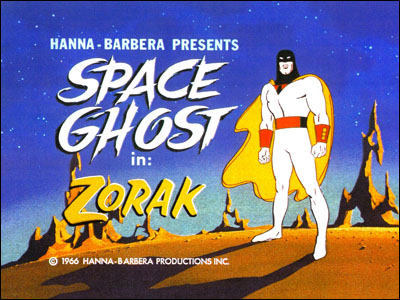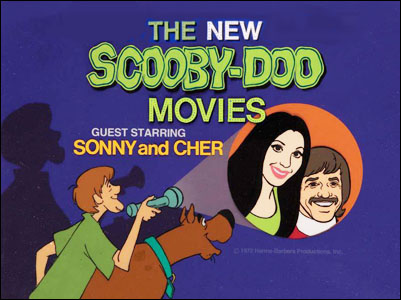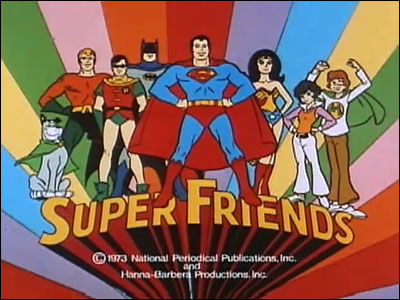This past Saturday was the last morning that any of the three major broadcast networks aired programming for kids. Once upon a time, all three did. ABC, NBC and CBS each gave us several hours per Saturday and young'uns would get up that morn and sit there for the duration, watching cereal and toy ads interspersed with shows and occasional "educational" content. I was on both ends of that wonderment: For years I watched it and for later years, much of my income came from writing such shows.
Why did it have to end? There were about eleven reasons and they were all money. A lot of them had to do with the rise of alternatives for viewers in that age bracket. In its heyday, Saturday morning was darn near the only time kids could turn on the TV and see shows for them — or at least, anything new.
Then at some point, you had Fox and the WB programming on weekday afternoons. You had the rise of cable channels like USA Network and Nickelodeon and eventually Cartoon Network offering cartoons and live-action shows targeted for that audience. You had other weekday syndicated fare, most of it driven by toy companies that underwrote shows that would promote their products. You had competition for the kids' attention in the form of videogames and home video…
It all started to make Saturday Morning seem like not as special a time.

One of the big changes was in the financing of shows. Once upon a time if you wanted to do a show for children, you went to one of those three networks and tried to sell it. If they thought it would draw the proper ratings, they might buy it — that is, if you were the kind of entity (like, say, Hanna-Barbera, DePatie-Freleng or Filmation) that could be counted on to deliver a professional-looking product and to deliver it on time.
A lot of other companies tried to crack the marketplace and over the years, a few managed it: Ruby-Spears, Warner Brothers, Disney, DIC, a few others. And in a non-animated vein, there'd often be a program from Sid and Marty Krofft. Many firms tried but did not become players because they could not convince the networks that they could get shows done on time and up to minimum broadcast standards.
But let's say you could convince them to trust you and they wanted the show you pitched. Back then, they would offer you a license fee — a sum of cash in exchange for which, you'd make the show and allow them to air it. The deals varied in structure but a not-uncommon one was simply X dollars per episode for 13 episodes, each to run four times over a year, plus there'd be options for more episodes (and to rerun all or some of those already produced) in subsequent years with a slight annual bump in the license fee.
The license fee was an interesting number. It was high enough that you could, conceivably, deliver the show for that amount and make a nice profit. A lot of studios did that. They'd pocket 10% to maybe 30% of the license fee and then tell the folks who actually had to go produce the thing, "Okay, do the best you can on what's left." Sometimes, if you had a good premise, sharp writing, great voice work and a couple of terrific artists who knew how to design for cheap animation, that was enough.
Often though, it was not…and what you wound up with was a show that ran one or two seasons, then went away. Which meant you might make only 13 or 21 episodes.
(Why 21? Eight new ones was a frequent second-season order to save money. The new entries "freshened" the library and in Season #2, episodes could be rerun every 21st week instead of every 13th. This for a time put Hanna-Barbera in a position that Max Bialystock would have envied.
In the days when they furnished most of what was seen on all three networks' schedules, they could more or less count on a canceled Hanna-Barbera show being replaced by a new Hanna-Barbera show. Ergo, if a given program ran two years, H-B produced and got paid for 21 episodes. If it was canceled after one season and replaced by something else from H-B, they did 26. You could, in the immortal words of Leo Bloom, make more money with a flop than with a hit.)
13 or 21 episodes was, in a way, a flop. You didn't have enough of 'em to get great deals for off-network or foreign syndication. Also, the bigger the hit, the more merchandising — toys, comic books, wearables — you were likely to generate. So some studios decided it was a sound investment to not do every series as cheaply as possible. Instead, they'd incur some risk and aim for greater success. They would not pocket any of the license fee. They'd probably even deficit-finance a little: Spend $300,000 per episode on a show when CBS was only paying $250,000.
That was often cost-effective and deficit-financing became even more the norm for syndicated shows. Toy companies found it paid off to underwrite the cost of a series that promoted their products. A Mattel or Hasbro could easily sink a few million up front into a show about characters they were marketing to make those characters more famous. Not every time but often enough, having the show out there, five days a week in syndication, would boost toy sales enough to make that a good investment.

With such shows siphoning viewers away from networks, the networks did the logical thing: They stopped paying high license fees for Saturday morning programming. Thereafter, if you wanted to get your production on in one of those time slots on a broadcast network, you had to give it to them for a very low price and make up the rest of your costs elsewhere. Selling it cheap usually meant doing it cheap and there was a change in priorities.
No longer was it all about doing a show that would be a hit on Saturday morning because that alone was no longer enough to make a profit. It was just a way to pay part of the cost of production. You had to have your eye on foreign sales and merchandising. I wasn't approached a lot to work on such shows because, well, I wasn't the cheapest talent available. But the times I was asked, the producers made it clear they didn't care that much if a show drew an audience on Saturday morning. That was no longer where the game was.
And of course, since airing cartoons on Saturday mornings became a lot less lucrative, one by one the networks stopped doing it. Which got us to where they are today: They don't do it at all anymore.
There were, of course, other factors besides this that changed the landscape of TV animation. I don't mean to discount that a lot of kids would simply rather play Xbox or watch their cartoons on DVDs. Technology and new platforms have had a lot to do with making the old business models and platforms obsolete. Kids today don't see why they should only be able to watch their favorite characters on Saturday morning at 10:30 AM. The way we got our cartoons on Saturday morning is incompatible with a generation that wants what they want when they want it.

These days, almost no one does a cartoon show that will succeed or fail just as a cartoon show. What we have now are programs that succeed or fail as part of a massive marketing campaign for the property. Worldwide sales are a much greater concern than they used to be. Merchandise sales are a much greater concern, too. Well, of course. That's where the money is…and I'm not suggesting this is all for the worse. Some real good shows that will be rerun forever have emerged from this new system. Getting the control of TV animation away from the Big Three TV networks has brought much more freedom for the creative folks.
As a kid, I loved watching cartoons on the networks on Saturday morning…but I don't think it was because of the networks or the day. It's just that I loved cartoons and that's where they were. Now, they're everywhere. That is not a bad thing for those of us who love animation.
As an alleged adult writing cartoons, there was something to be said for working in the network Saturday morning marketplace. There was something nice about doing a show when the only real concern was not the attendant marketing campaign and whether the show would get picked up in Rangoon. All we cared about really was doing a show that kids would watch over and over.
A better time? On the whole, I don't think so…because when it was just ABC, NBC and CBS, we were too often under ridiculous restrictions both in terms of "broadcast standards" (censorship) and the very limited ideas you encountered as to what made for a good show. I retain my nostalgic fondness for the experience of watching cartoons on Saturday morning on those networks. But I think I'm glad animation broke out of that.
And really: You can buy DVDs of just about any cartoon that ever existed or record them, whenever they air, on your D.V.R. If you miss the idea of cartoons on Saturday morning, there's nothing stopping you from watching them then.